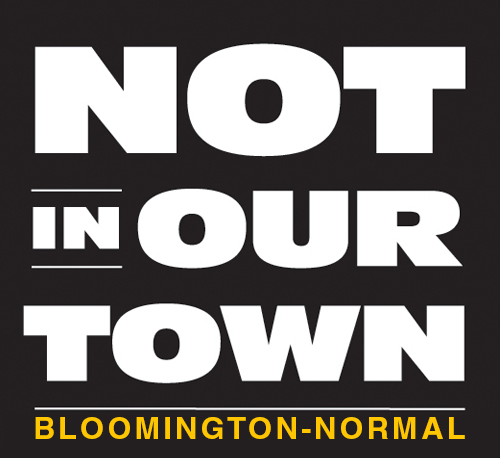August 26 marks the 95th anniversary of the passage of the 19th amendment, giving women the right to vote. After nearly a century, the image of the steadfast “suffragette” remains, but it’s only part of the picture that led to the historic amendment.
“Many people have a one-dimensional understanding of suffragettes, thinking of them only in terms of women who protested for the right to vote, and as only white, middle-class women,” said Associate Professor of History Kyle Ciani. “In reality, by the early 20th century, people concerned with women’s right to vote included African American, native-born white, and immigrant women from diverse economic classes.”
The stereotypical suffragette – or those who wanted the right for women to vote – is often depicted as a passionate woman in the early 1900s, who chained herself to carriages, or was loudly hauled away by police for demanding the vote. Though there were demonstrations and arrests, the movement dates back to the early 1800s, when women pushed for laws that didn’t strip them of their property and rights in marriage.
“This was a long, hard-fought battle. It didn’t happen overnight,” said Ciani. “It was an organized effort that took strategy, and time. No one woke up one morning and just decided they wanted the vote for women.”
By the 1830s and 40s, educated women with ties to the abolitionist movement led the charge for more rights, yet the battle for the vote began in earnest in the post-Civil War days. “The 1870s and 1880s is when women began to enter the political sphere,” said Ciani. When the 15th amendment passed, allowing all men to vote, “women cried foul,” she said, and the symbol of a national women’s vote crystalized.
Of course, women all over the U.S. were already involved in politics by this point. Prior to the 1920s, many states already allowed women to vote, either locally or in state and national elections. Illinois signed women’s suffrage into law in 1913. “Every state had different rules, but women have been active in politics since the 1870s,” said Ciani.
In fact, Bloomington was the first town in Illinois to hold an election where women could cast ballots. In April of 1892, women of Bloomington legally took part in an election for school board members. “Education was considered an extension of women’s roles as a caretaker,” said Associate Professor of History Monica Cousins Noraian, who wrote a book on Sarah Raymond-Fitzwilliam, the nation’s first female school superintendent, who served in Bloomington from 1874 to 1892.
Raymond-Fitzwilliam, a former Bloomington teacher and principal, and a graduate of what was then Illinois State Normal University (ISNU), had been appointed unanimously by school board members for more than 18 years. Yet the 1872 school board election became more about women’s suffrage than job performance. “There were two sets of candidates, who campaigned on a pro-female or anti-female platform,” said Noraian. “The anti-female candidates demanded that women be kicked out of leadership positions in schools, and ‘return things to men.’ It was a very contentious election.”
Raymond-Fitzwilliam was reappointed to her post, but she resigned shortly thereafter, fearing the controversy would limit any hopes of a harmoniously working school board. “She married, moved to Chicago and continued to work for women’s rights,” said Noraian. “So what people might think would be an election where a woman would have all this support, became anything but that.”
Noraian credits Raymond-Fitzwilliam’s upbringing in an abolitionist home, and her education at ISNU as a foundation for equality for women. “Men and women had classes together and conducted debates together,” she said. “Her early experiences helped shape her beliefs on reform.”
“Women in Illinois are historically leaders in social justice reform, and women having access to higher education is key in that,” said Ciani, adding that Sarah Hackett Stevenson, an ISNU graduate, was the first female physician inducted into the American Medical Association in 1876, a full 44 years before the U.S. Constitution gave women the right to vote.
The lack of a constitutional vote didn’t stop women from making a run for the top office in the nation. Victoria Woodhull ran for president in 1872 under the Equal Rights Party, as did Belva Lockwood in 1884 and 1888. Laura Clay was the first to have her name added to a potential roster of candidates for a major national party, the Democrats. “Hillary Clinton was not the first,” said Ciani.
Women’s rights and anti-lynching activist Ida B. Wells.
Part of Clay’s platform was actually to oppose national suffrage for women. From the South, Clay feared the passage would allow the federal government to interfere with states implementing (or refusing to implement) the 15th amendment.
Race was one of many schisms facing the women’s rights movement on the path to an amendment, noted Ciani. “There is no such thing as one, single movement. There is always a diversity of ideas and dissention within any group, and the women’s rights movement was no different,” she said. “But for every woman who believed—wrongly—that adding African American women to the suffrage push would nix the movement from a national conversation, you had women like journalist and anti-lynching activist Ida B. Wells, who refused to ‘ask’ permission to march in suffragette parades.”
Looking at the legacy of the women’s rights movement in politics, Ciani said the 19th amendment showed that a long-term strategy could work. “Activists have learned a lot from the highly organized strategies of this movement. I would liken it to the efforts to pass the Marriage Equality Act. It showed the victory could really be won through determination, consensus and compromise.”




















